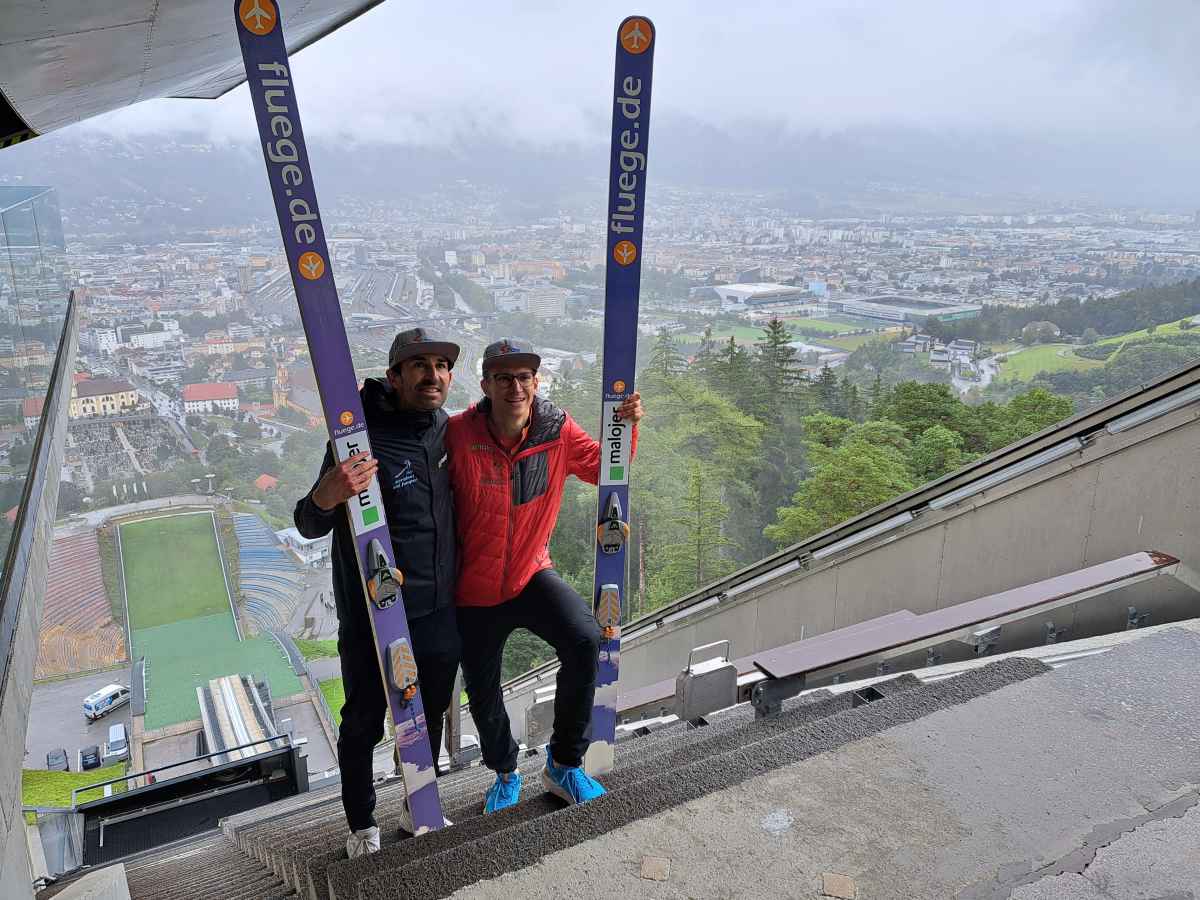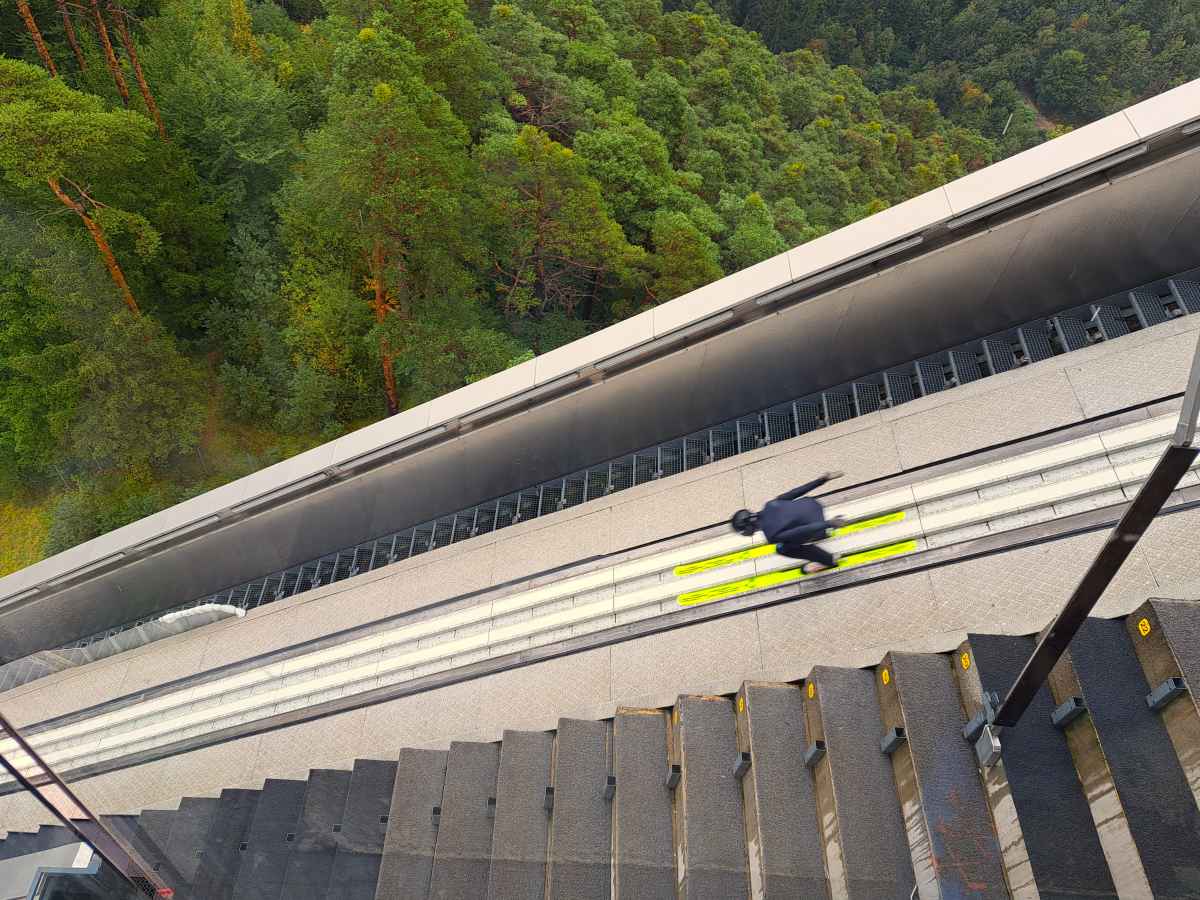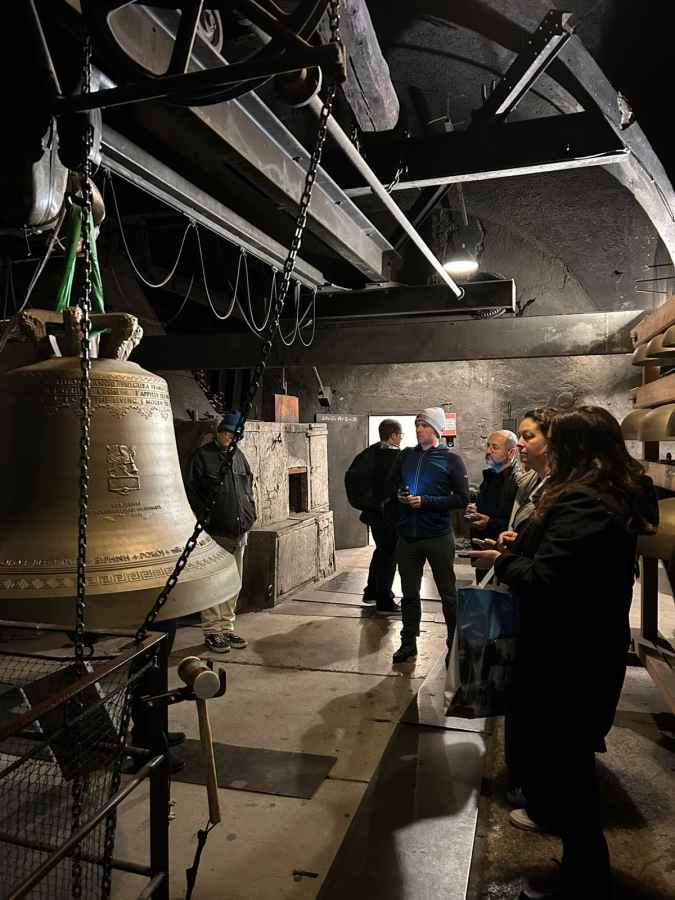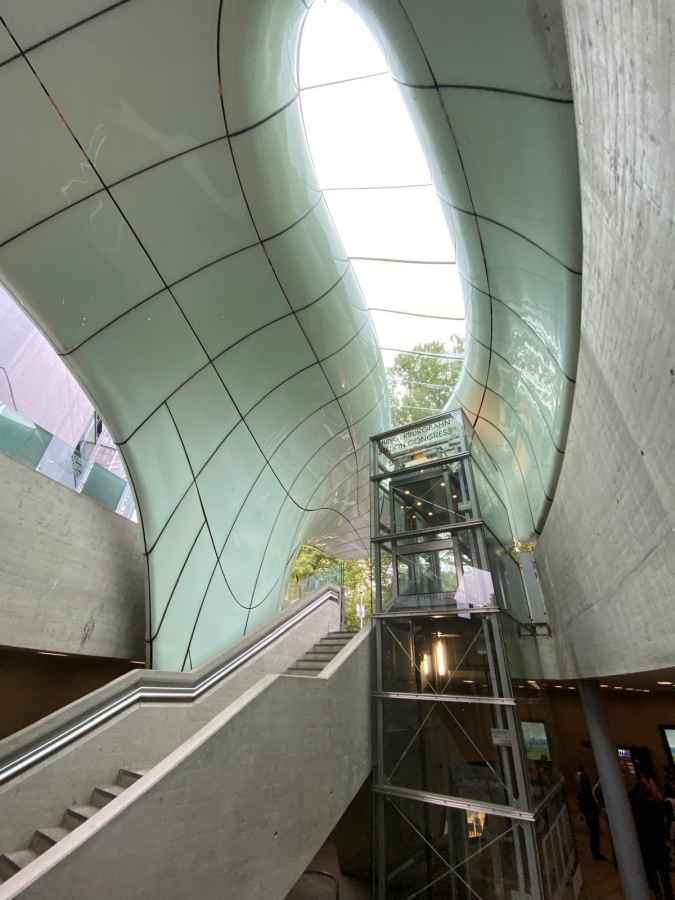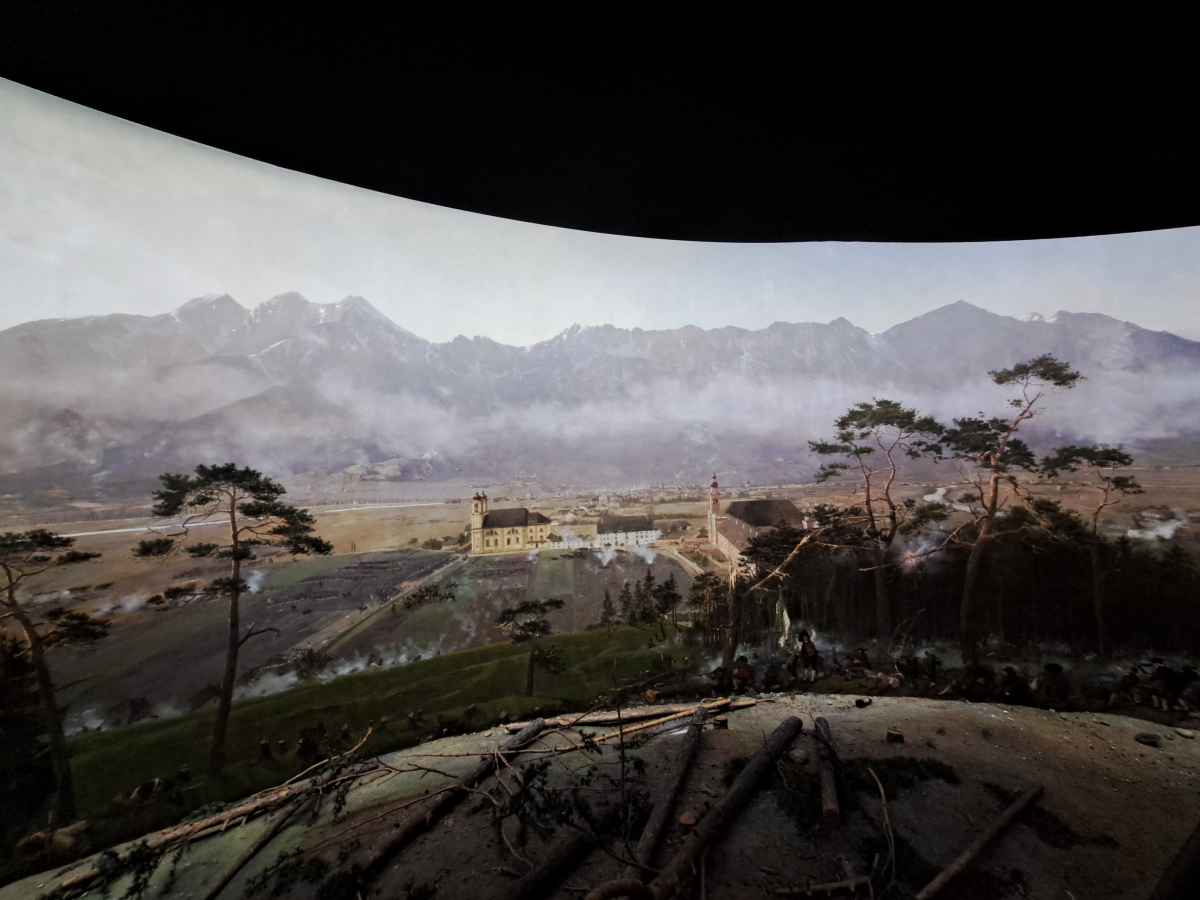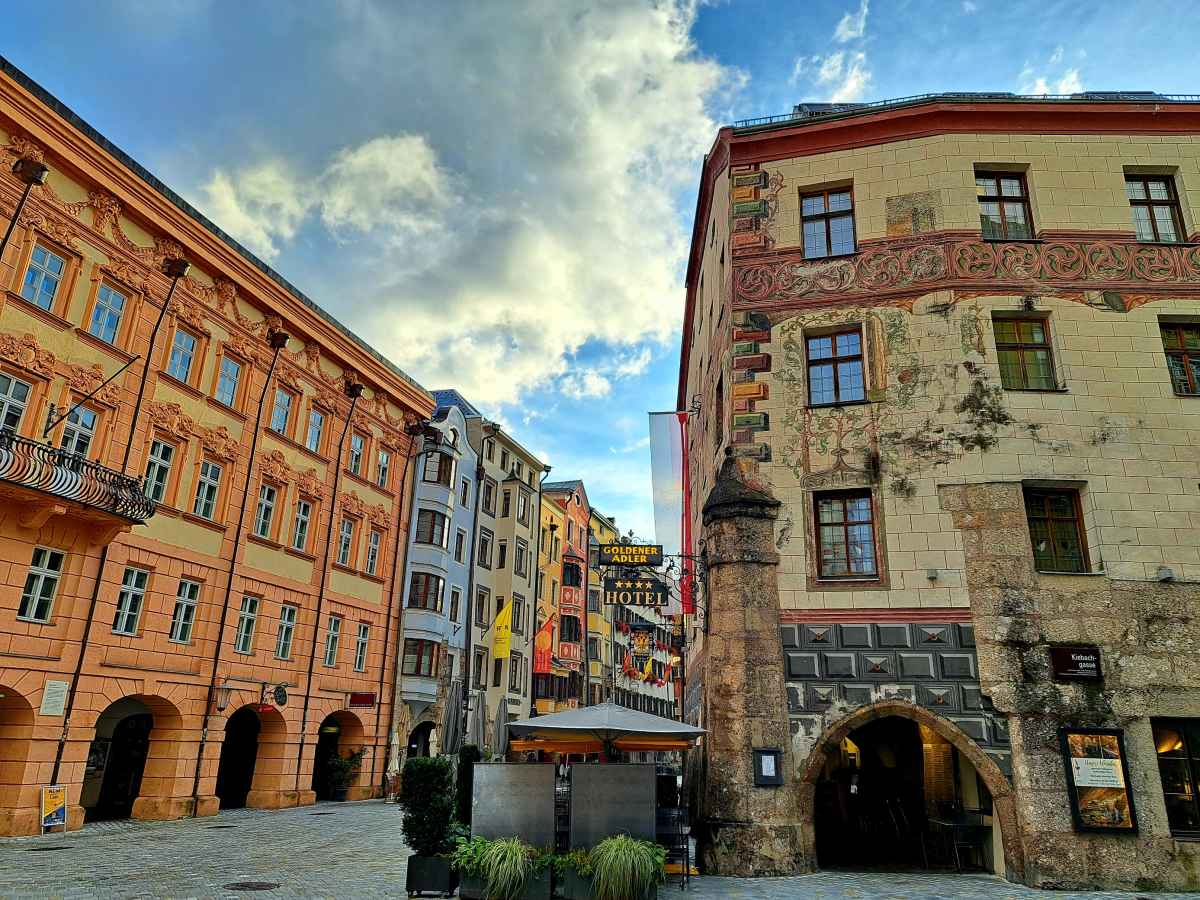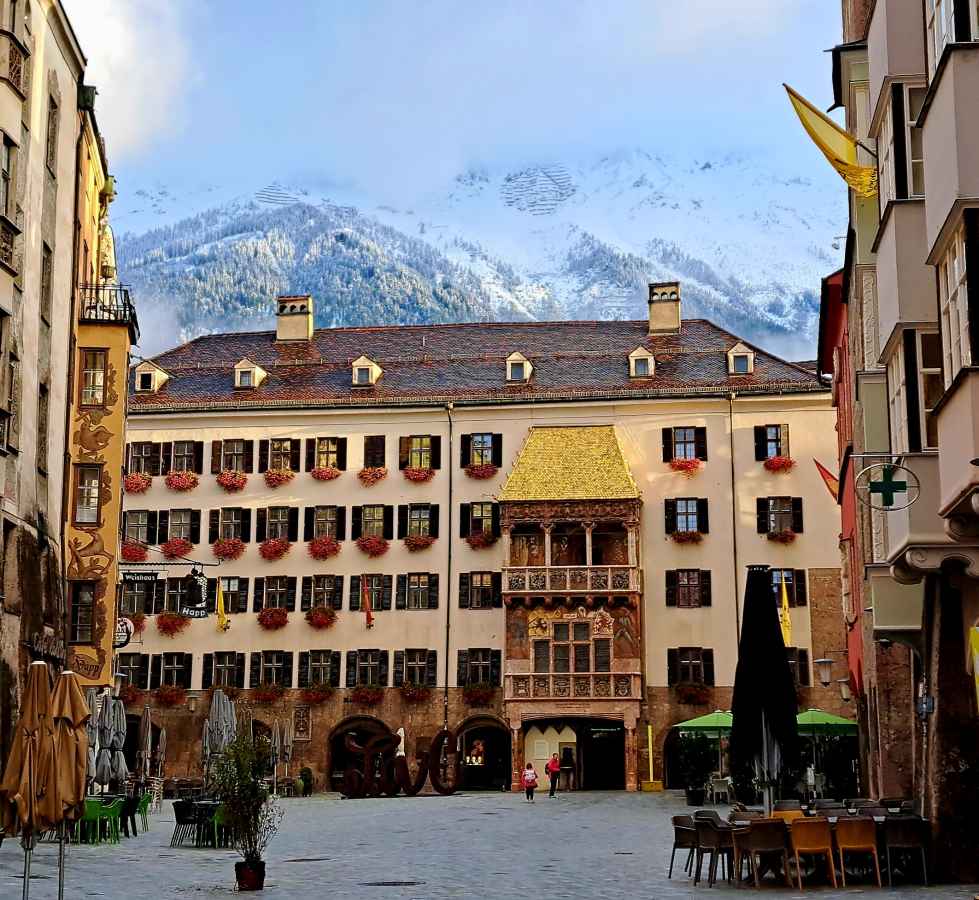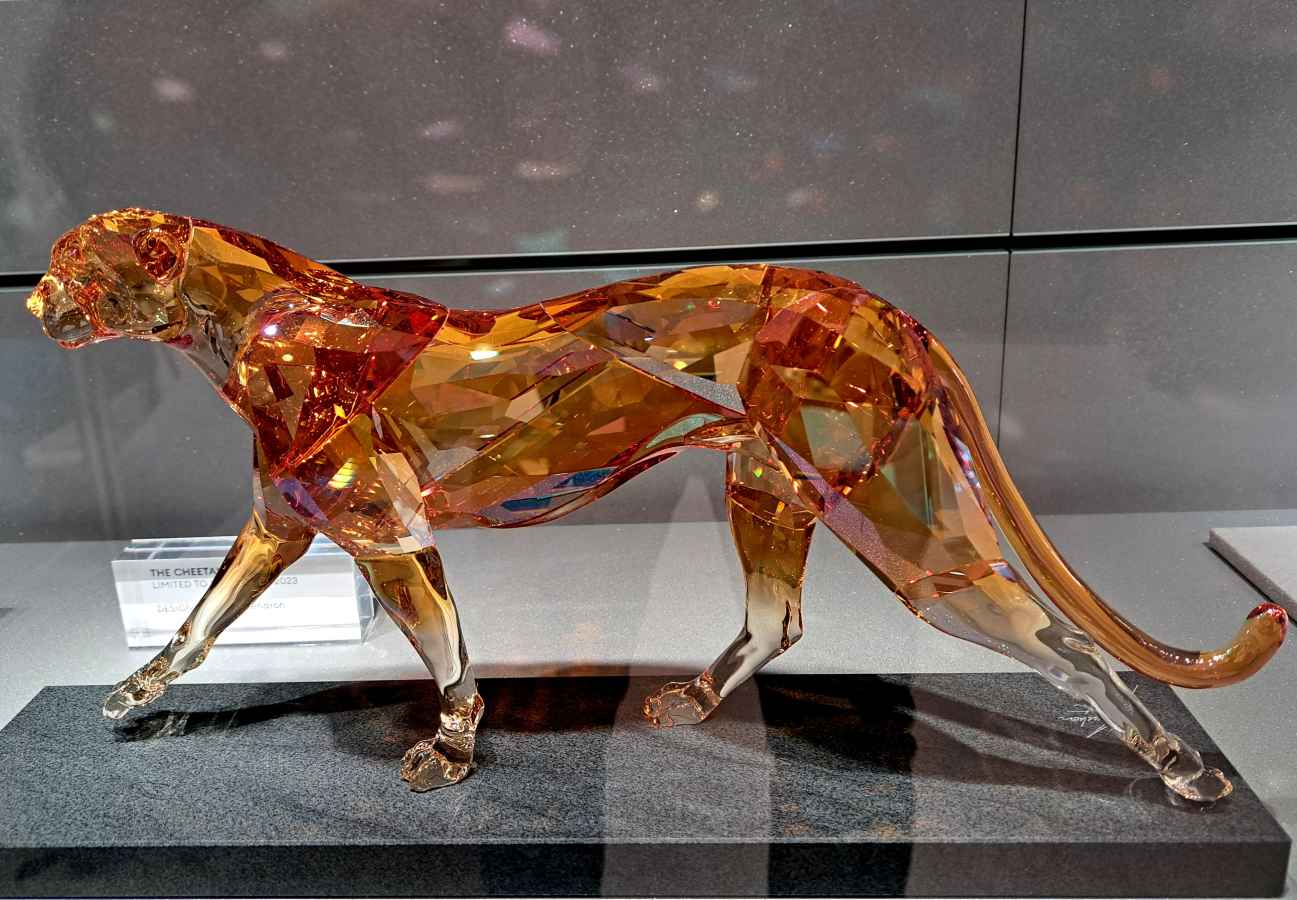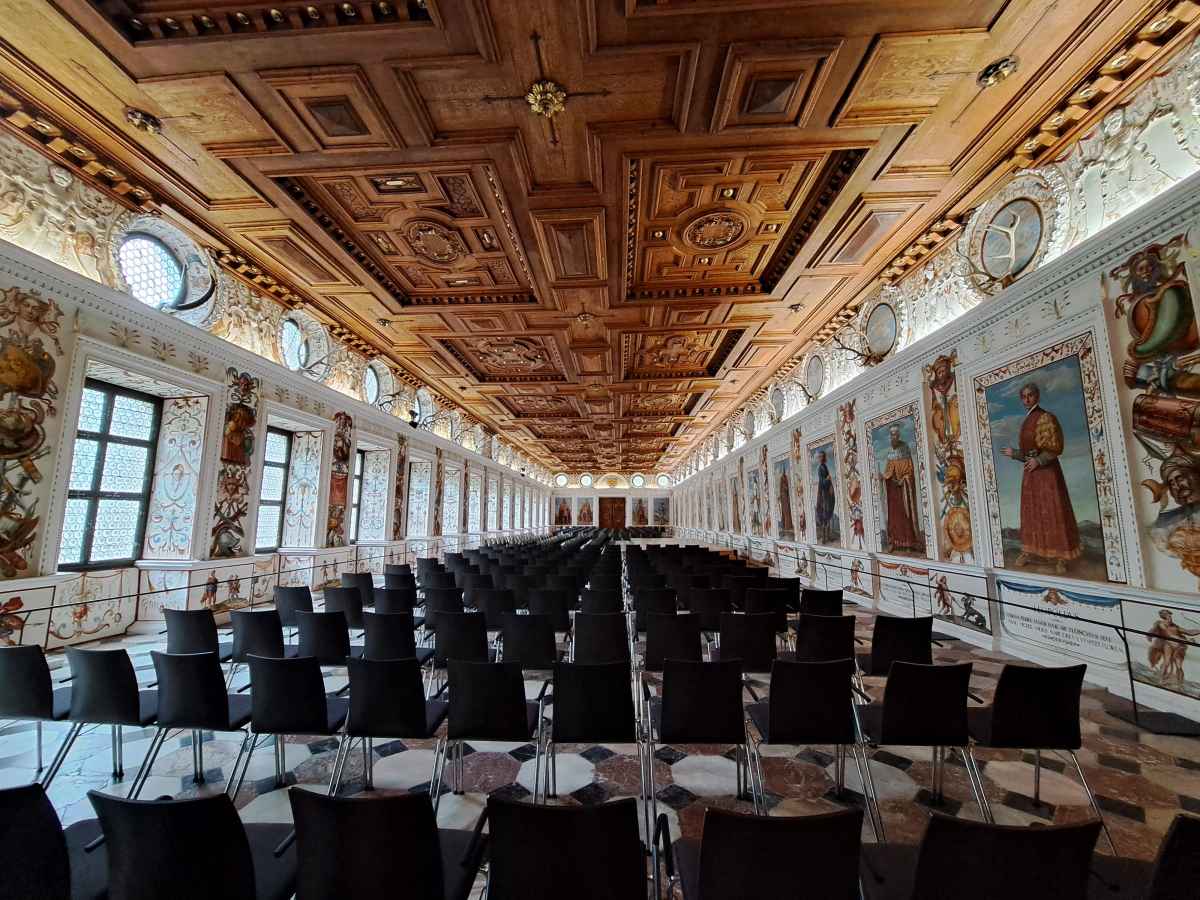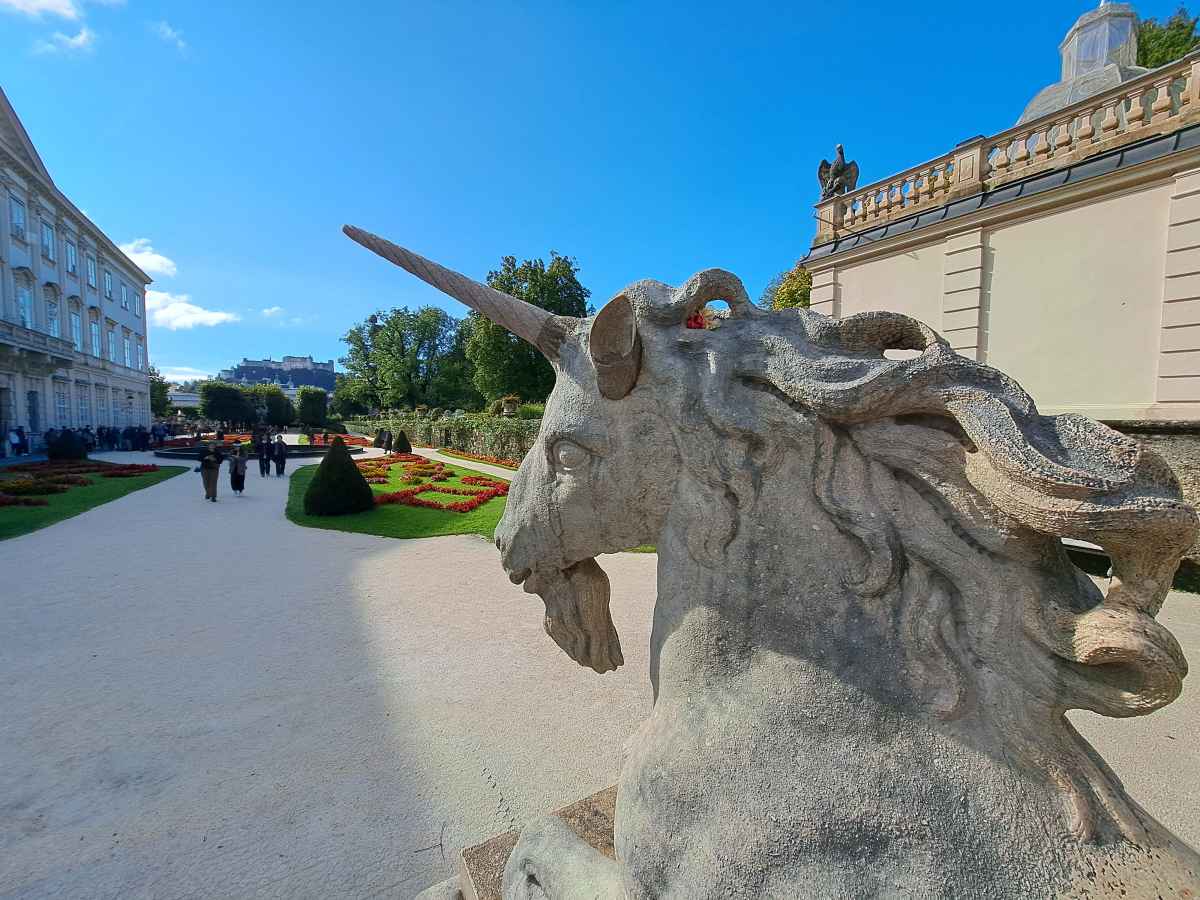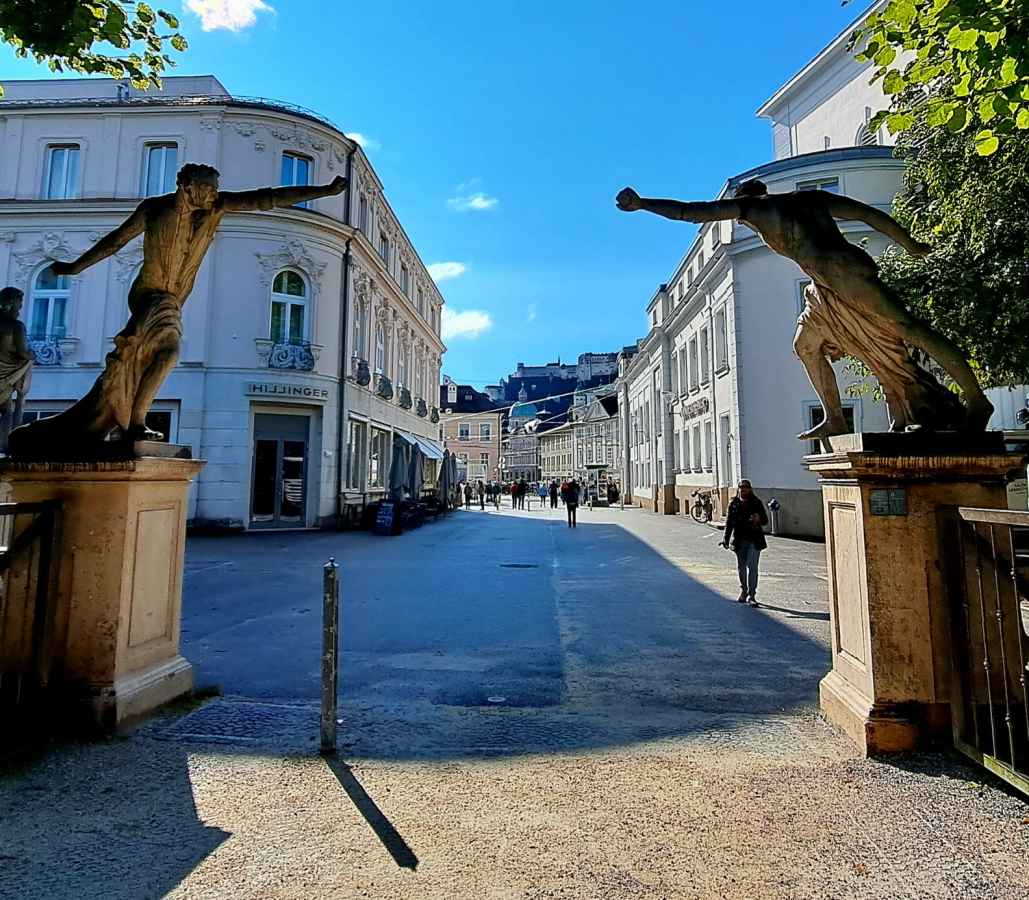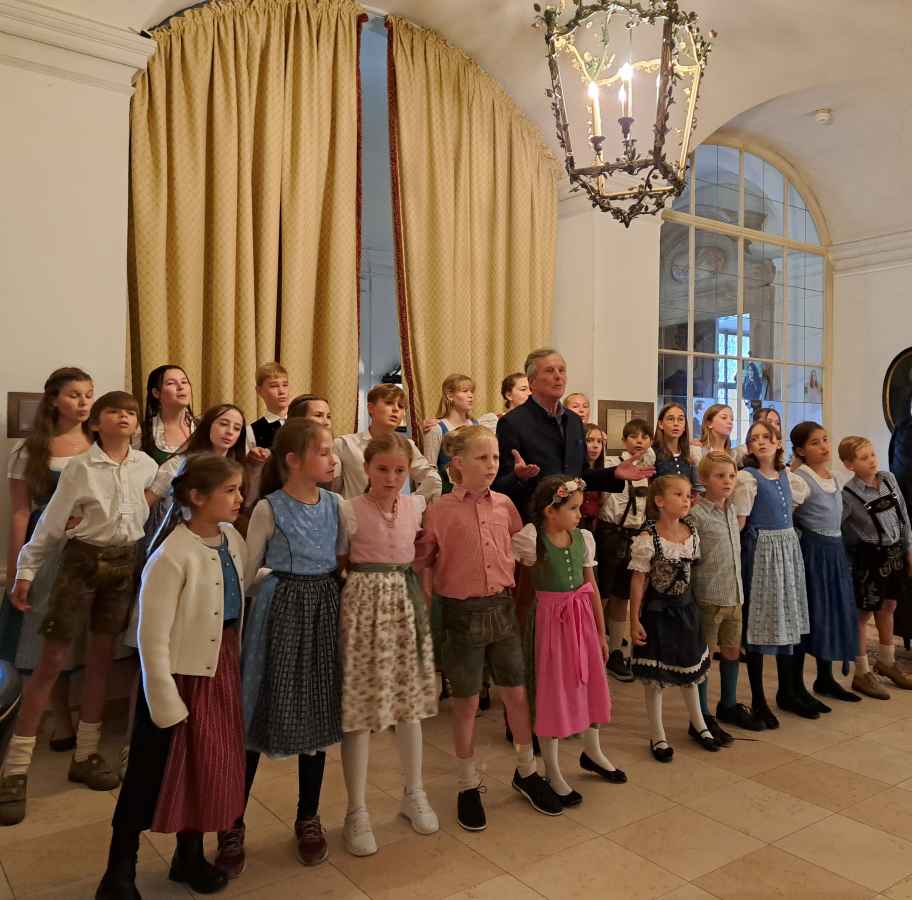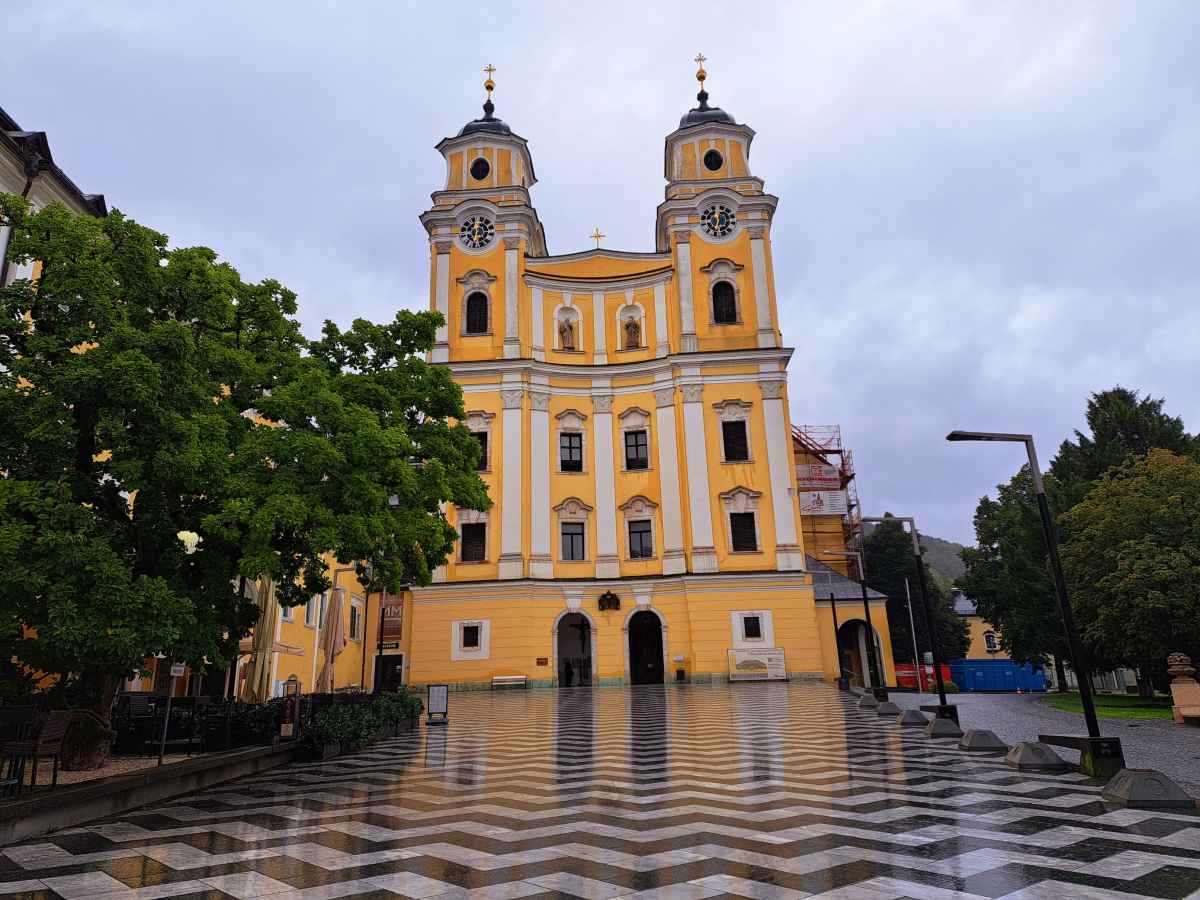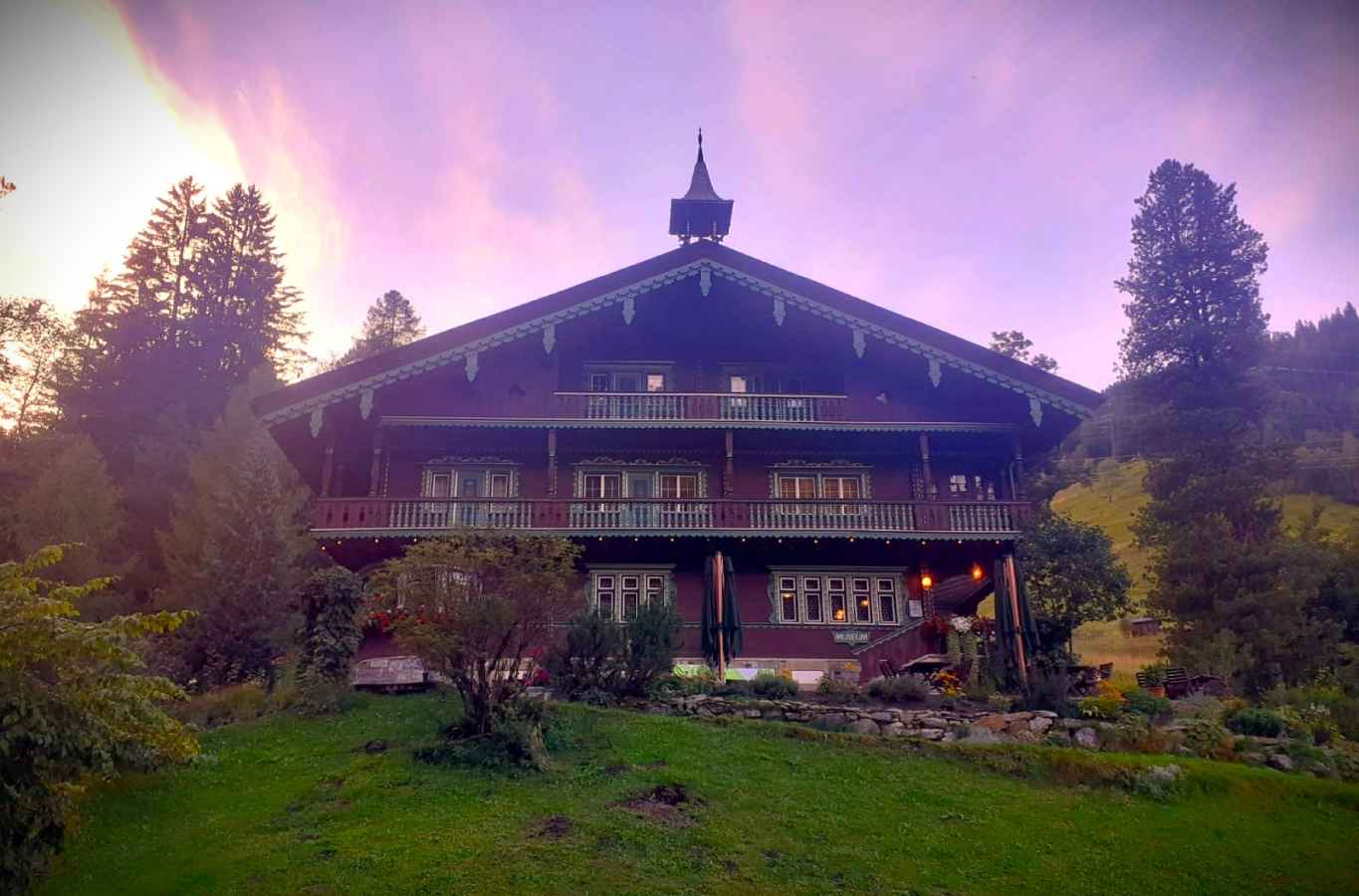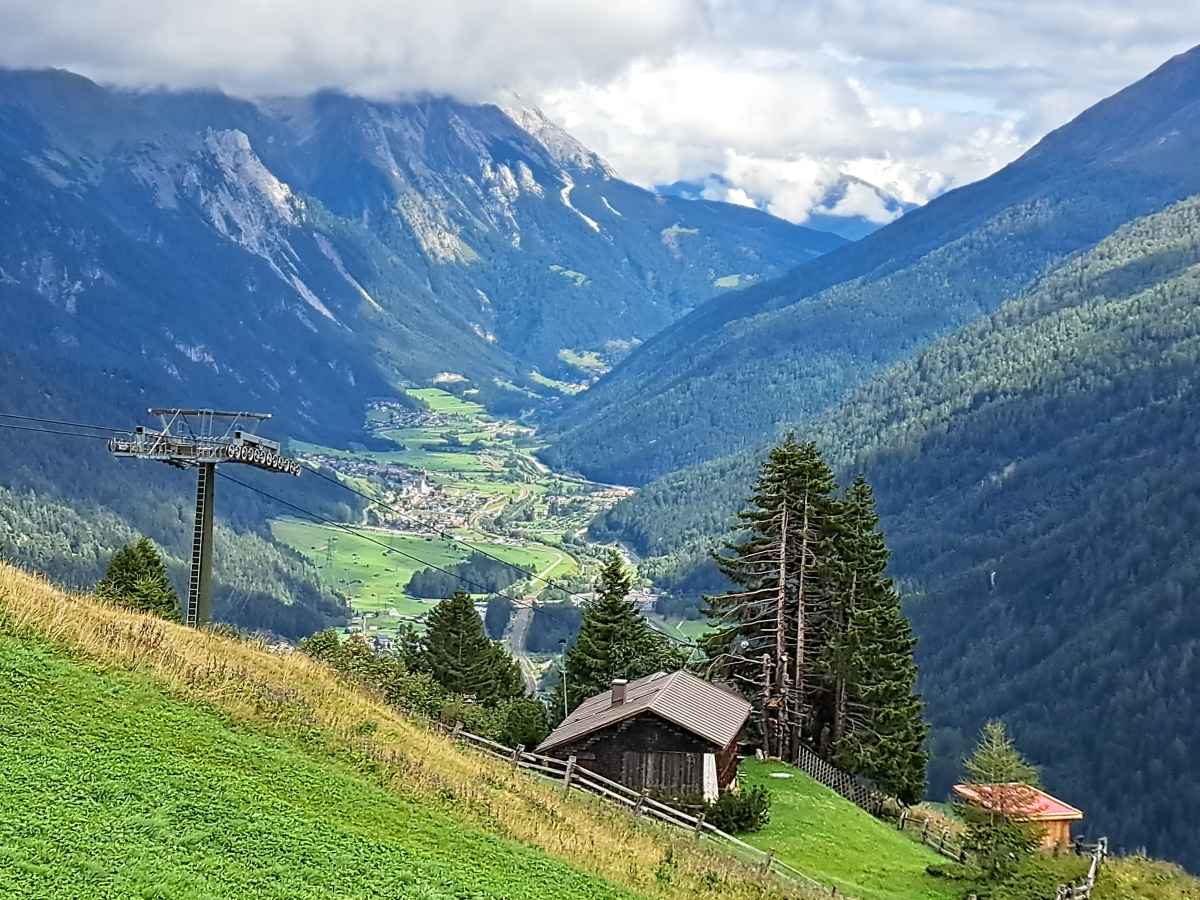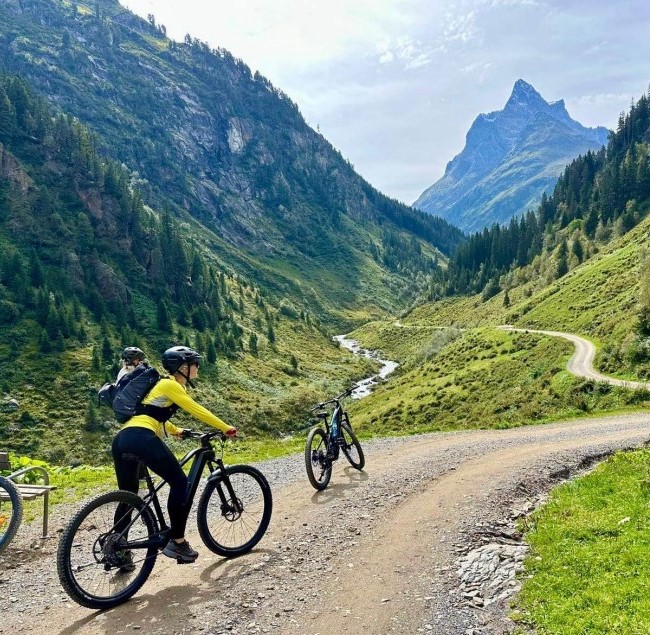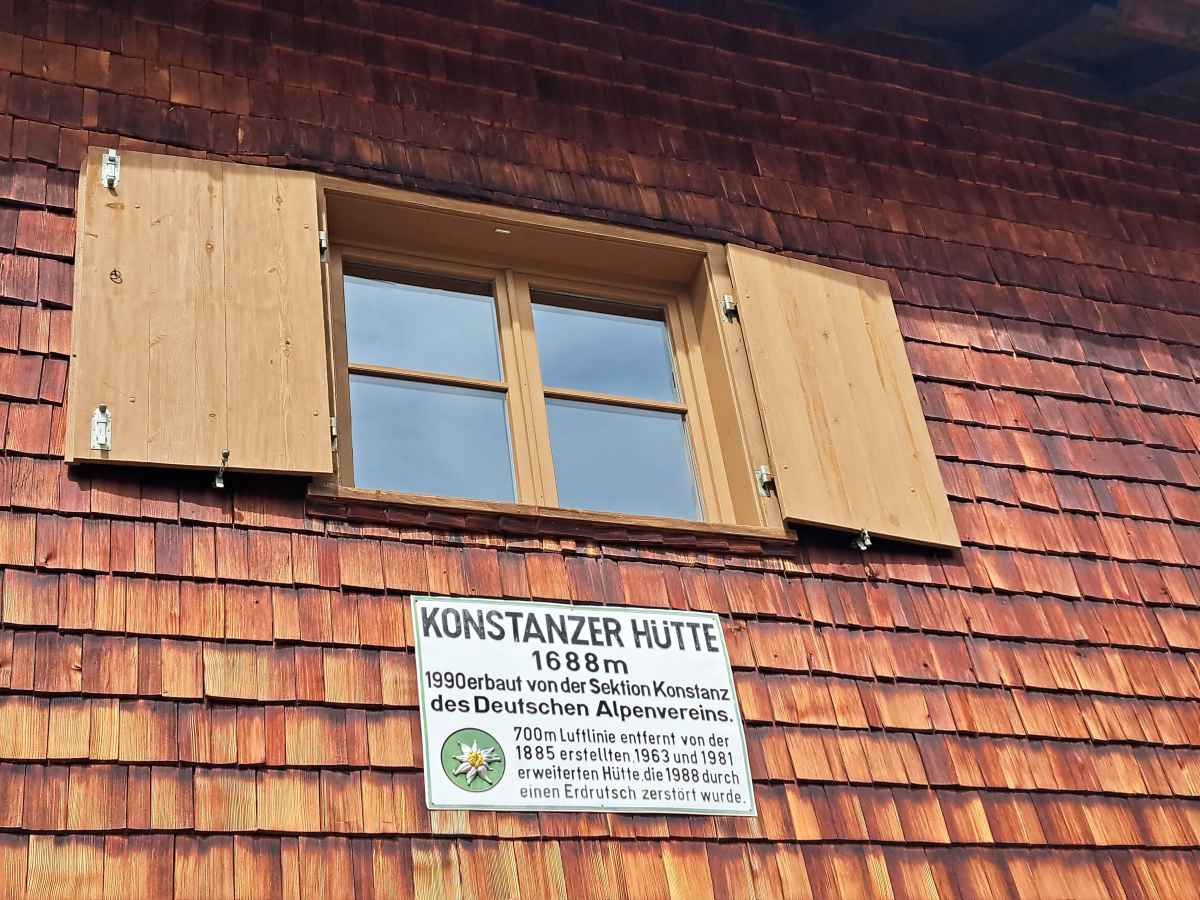FINDING YOUR "LEBENSGEFUHL" IN AUSTRIA
Ramy James Salameh sets off on a journey through three of Austria's most beguiling destinations - Innsbruck, Salzburg & St Anton am Arlberg - in search of his "Lebensgefuhl".
Goldenes Dachl (Golden Roof)
Sitting directly behind a ski-jumper upon Innsbruck's Olympic Ski-jump Tower, was like looking through the sights of a gun, such was our focus, elevation and trajectory. The athlete pushed away from his 'start bar', immediately crouching into the customary aerodynamic form. His 'inrun' was underway, accompanied by a swishing sound, as the skies followed their channel until ‘take-off’ and then silence.
Everyone held their breath, as the jumper with splayed skies, floated in mid-air before disappearing from view. It was in those few silent seconds, that my eyes absorbed the magnificent vista of Innsbruck's cityscape in the valley below, set against a set of snowy alpine pinnacles. The ski-jumper reappeared on the hillside beyond, where the arena’s three Olympic torches brought my focus to the foreground.
It was in these moments, that the term 'Lebensgefuhl' started to make a little sense; it is an Austrian word to describe the 'feelings', 'emotions' and 'interactions', which one can experience through the people, cities, landscapes and experiences, which define this beautiful nation.
Austria has a knack of heightening your every sense in so many different ways and Innsbruck soon conjured another for me. Standing within a giant bronze ‘Singing Bowl’ as Monika Unterholzner (nee Grassmayr, member of Austria’s oldest family-owned bell foundry) tapped its side allowing the reverberations to wash over me. This totally unique feeling was brought-on by a series of soundwaves, which have been perfected by the ‘Grassmayr Bell Foundry’ over the last 400-years.
Similarly, criss-crossing the cobbles of the old town to dive into the world of Schnapps-making at ‘Schnappsladen Tirol Geniessen’ and visiting ‘Walde Seifen’ a 250-year-old traditional Soap and candle-maker, before taking coffee and cake at the ‘Struddel Café Kroll’, all started to further define my 'Lebensgefuhl'.
Innsbruck - A sensory experience
Innsbruck, has a symbiotic link between active-adventure, imperial glamour and futuristic design. The late ‘star’ architect Zaha Hadid, has her architectural DNA across the city, from the Bergesil Ski Jump to Hungerburgbahn funicular Station, whose canopy appears like a glacial ice-cave. It is the start-point for locals and visitors to indulge in active-adventure upon the Nordkette mountain range or simply imbue the clean air and unparalleled views of the city below from the cosy snug of the Seegrubbe Restaurant.
Just below Hadid’s Ski Jump design is another modernistic masterpiece by ‘Stoll Wagner Architects’; the 'Tyrol Panorama Museum’ sits on the site of a fierce battle between the victorious Tyrolean freedom-fighters led by Andreas Hofer and Napoleon's French troops, on the 13th August, 1809. The clash is now depicted through a 360°, 1,000 square-meter panoramic painting, created in 1896 to celebrate the Tyrolean victory and the centre-piece of the museum.
The Hungerburg district is on the edge of the ‘Altstadt’ (old quarter), a place of charming arcaded and cobbled medieval streets. It was Monika Unterholzner who guided us through the city’s finest monuments, some of which must contain cast bronze and copper from the family foundry. We headed to the ‘Cathedral of St James’, with its Baroque architecture, duo of church towers and its carillon of 48 bells. Next the Hofkirche (court church) housing the empty tomb of Emperor Maximilian I, surrounded by a sentry of giant bronzes which includes King Arthur and other nobility.
As Innsbruck was the former seat of power for the Habsburg dynasty, the old town buildings reflect this grandeur. From the 'Hofburg Imperial Palace' to the ‘Goldenes Dachl' (Golden Roof) the iconic symbol of Innsbruck; its 2,657-fire-gilded golden copper tiles dazzle in the morning sunshine, surrounded by buildings with stucco-work of baroque and rococo splendour, and exalted by a snowy and mountainous backdrop. An image I woke in the early morning to capture.
Another site of importance is the dazzling ‘Swarovski Crystal Worlds’ created by Austrian artist André Heller for the 100th anniversary of the company and well-worth making the trek a little way out of Innsbruck to enjoy, as is the beautifully preserved 'Ambras Castle'. This renaissance palace, a conversion from its medieval origins by Archduke Ferdinand II, is set in the hills above Innsbruck.
The Archduke used it to display his collection of arts, armouries and books, making it the oldest museum in the world. The awe-inspiring Spanish Hall, which overlooks an English-style garden with a waterfall, wine grotto and pheasants was the perfect way to end my stay in the regional capital of the Tirol.
Salzburg – A musical heritage
In many ways Innsbruck and Salzburg share similarities yet remain distinctly different. The former is dominated by mountains, the winter Olympics and active-adventures upon its doorstep. Whilst Salzburg, is dominated by music which delves deeply into the rich culture of this cosmopolitan city and is inextricably linked with its most famous son, ‘Wolfgang Amadeus Mozart’, ‘The Salzburg Festival’ and ‘The Sound of Music’.
In 2025 the city celebrates the 60th anniversary of ‘The Sound of Music’, with preparations well in-hand to mark six decades since the film’s cinema debut in 1965. The story of would-be nun, Maria, who takes a job as a governess in the Austrian household of the ‘von Trapps’, continues to enthral fans from around the world.
The movie remains the catalyst to visit many of Salzburg’s most beautiful attractions and to explore further afield. Even after six decades, I, and many thousands of tourists continue to follow in the footsteps of the ‘von Trapps’, merrily circling the Pegasus Fountain at Mirabell Gardens (site of the finale of the "Do-Re-Mi" song), alongside visits to Nonnberg Convent, the Palace of Hellbrun, Schloss Leopoldskron and even as far out as St Michael’s Basilica in Mondsee where the marriage scene was filmed.
A new museum dedicated to the legacy of “The Sound of Music” is planned to open in Hellbrunn in 2026, and is where the famous ‘Glass Gazebo’ can be found, with tourists re-enacting Georg and Maria’s love songs "Sixteen Going on Seventeen" and "Something Good".
Schloss Leopoldskron was one of the most important filming locations in the movie, and today the villa lives on in various different guises. It continues to be a filming location, recently hosting ‘Nine Perfect Strangers’ featuring Nicole Kidman, whilst Karl Lagerfeld transformed the Schloss into a giant runway for his 2014 CHANEL Métiers d’ Art fashion show. It is also home to the ‘Salzburg Global Seminar’, an organisation challenging and nurturing future leaders to shape a better world, and from day-to-day it is a historic hotel.
The Schloss dates to 1736, once the former home of the Prince Archbishop of Salzburg. Much later it became the home of Max Reinhard, a world-renowned theatre director, who in 1918 sympathetically renovated the building to its former glory. It was in the 'Red Saloon' and former office of Reinhart where he conceived the idea of the ‘The Salzburg Festival’ alongside co-founders Hugo von Hofmannsthal and Richard Strauss.
These men envisioned Salzburg as a giant stage and wanted to use it to highlight the works of Mozart; it was their moment of inspiration and no doubt their ‘Lebensgefuhl’. For more than 100-years, the 6-week summer festival has classical music and culture running like a ribbon through some of Europe’s grandest monuments. From Mozart’s birth house to the Dom Quartier with its Baroque cathedral and residence, and the Fortress Hohensalzburg watching over Salzburg’s UNESCO World Heritage centre, since the 11th century.
St Anton am Arlberg – power of nature
St Anton's ‘Mountain Yoga festival’ and the ‘Almatrieb Cattle Drive festival’, bookended my final few days of discovering my 'lebensgefuhl' in Austria. This pioneering ski resort’s history is carefully curated within ‘Villa Trier’, which is both a museum and one of the finest examples of traditional folklore architecture in Austria.
I walked through the carefully carved wooden doors of the villa to understand why St. Anton is known as the cradle of alpine skiing. It is interwoven with names like Carl Schuler who transformed his once modest 'Post Inn' into a more modern hotel in 1897, and also helped found the Ski Club Arlberg. Hannes Schneider, another important figure is seen as the founding father of ski instruction for having popularized the emerging sport of Alpine skiing in the early 20th century. Lift and cable car innovations followed, giving access to the high-altitude peaks, such as the Vallugabahn, built in 1955 and still taking passengers to the summit at 2,811 meters from which one can observe on a clear day, mountains across 5 nations.
With such wild and rugged mountain scenery ready to explore, and just before this autumnal cosy resort turned into a world-class winter-ski wonderland, there was still time to partake in some active-adventure. There are few things which are more life affirming than being on an e-bike, fully-charged in every sense, and weaving through the alpine forests of the ‘Rosanna Gorge’, slowing only to let a herd of Tyrolean cows make their descent, after a summer grazing in the mountains. The further on I rode, the more nature unveiled its power and beauty, from the milky turquoise waters of 'Lake Verwallsee', which revealed its splendour from between the layered branches of firs, to the boulder strewn 'Rosanna River' thundering a snaking path beside our gravel track.
But what really stopped me in my tracks was the sight of the 'Patteriol Mountain', which carries the nickname the ‘Verwall Mattehorn’. It looked like it had been painted into the landscape, such is its majesty and classic pyramidal-form, with pin-sharp pinnacle. In fact, many an artist and photographer have captured it on film and canvas, but seeing it in person was awe-inspiring. With the Patteriol in our focus, it was just a couple more kilometres to our rest point, Konstanzer Hütte at 1,688 m, which sits at the junction of the Pfluntal, Schönverwalltal and Fasultal valleys. The plaque above the entrance noted its elevation and the year it had opened as 1885.
Even with a plate of Kaiserschmarren — a sweet, chopped-up Tirolean pancake in front of me, I continued to glance up at the 'Verwall Matterhorn' and add this as another of my Austrian 'Lebensgefuhl' moments!

